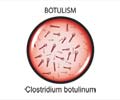A new study in the online open access journal Genome Biology has published that changes in gene expression patterns in zebrafish embryos resulting from exposure to environmental toxins.
The effect of toxins on developing vertebrate embryos can now be studied by researchers. A new study in the online open access journal Genome Biology has published that changes in gene expression patterns in zebrafish embryos resulting from exposure to environmental toxins can help identify the individual toxins at work.
Zebrafish embryos were exposed to eleven common pollutants, including cadmium, mercury and arsenic, by a team led by Uwe Strähle at the Institute of Toxicology and Genetics, Karlsruhe, Germany. The team monitored changes in gene-expression profiles in order to predict the chemical that the embryo had been exposed to; the results were clear-cut for 10 out of 11 toxins.Zebrafish have previously found a role in toxicology tests, for example in testing sewage for the presence of toxins. However, these previous tests involved looking at adult fish or embryos. The new method developed by Strähle and colleagues does distinguish individual genetic barcodes of chemicals and will help cope with the high demand from regulators and industry for reliable methods needed to evaluate the developmental toxicity of pharmaceuticals, industrial chemicals and waste products. The research may prove valuable for initiatives such as the European Union Registration, Evaluation and Authorisation of Chemicals programme (REACH) which was set up to improve the protection of human health and the environment through the better and earlier identification of the intrinsic properties of chemical substances.
"Zebrafish embryos offer a cheap and ethically acceptable vertebrate model that will not only be useful in the toxicological assessment of the tens of thousands of compounds to be tested under the REACH programme but can also help to evaluate the developmental toxicity of novel compounds at an early stage of drug development," says Strähle.
This new work provides the basis for the development of large-scale systematic methods for identifying the potential of chemicals.
Source-Eurekalert
GAN/V








